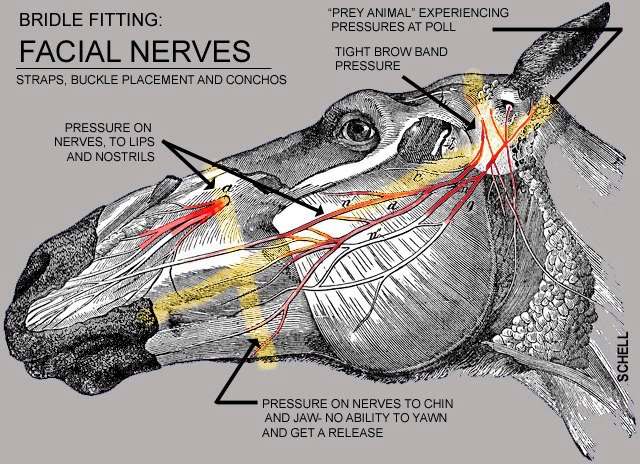














Vi er mer like enn du tror …

Link til anatomie vétérinaire sidi thabet sin anatomi Facebook side

Link til Facebooksiden til Just Anatomi
Link til side hvor du kan enkelt klikke deg frem i muskler og skjellet til hesten Anatomi Hest
Tilpasning av hodelag, hvilke nerver som blir berørt.

Nervebaner i hodet til hesten
Facial Nerves and the importance of proper bridle fitting. This is something Manolo is quite fanatical about, always adjusting nosebands, flashes, browbands and making sure the buckles do not push into delicate structures or the poll strap does not push against the horse’s ears (and of course checking bit fit).
A quick look at what cranial nerves DO reveal how important their well being is and why properly fitted tack is paramount. There are twelve pairs of cranial nerves. They have a role in:
Balance
Heart rate (sensory and motor control of viscera including heart, lungs, and bowel)
Hearing
Smell
Vision
Eye movement
Neck muscles that move the head
Sensation from the face
Motor to the muscles for biting, chewing
Facial expression
Taste from the anterior 2/3rds of the tonque
Taste from the posterior 1/3rd of the tonque
Tearing (lacrimal gland)
Salivation from the parotid gland as well as not from the parotid gland (different nerves)
Sensation and some motor to the pharynx
Swallowing (motor to the muscles of the soft palate, pharynx and larynx)
Vocalization (motor to the muscles of the soft palate, pharynx and larynx)
gastrointestinal peristalsis
Tongue movement
Our friend Diane Schell created this useful illustration showing the 12 pairs of cranial nerves and where they are in relationship to bridles potential pressure point. Thank you Diane.
This fits nicely with our Monday article from Shea Stewart about the TMJ and Cranio Sacral work.
Source: HorseAdvice.com and the Merck Veterinary Manual and this fantastic article from Tuft university: http://www.tufts.edu/vet/
PS: There is an important nerve Diane did not highlight in red. It comes out on the side of the lower jaw. If you look at the skulls we posted earlier this week, you can see it quite clearly on both side. It is a general sensory nerve for the skin of chin, and lower lip.
Image © Diane Schell